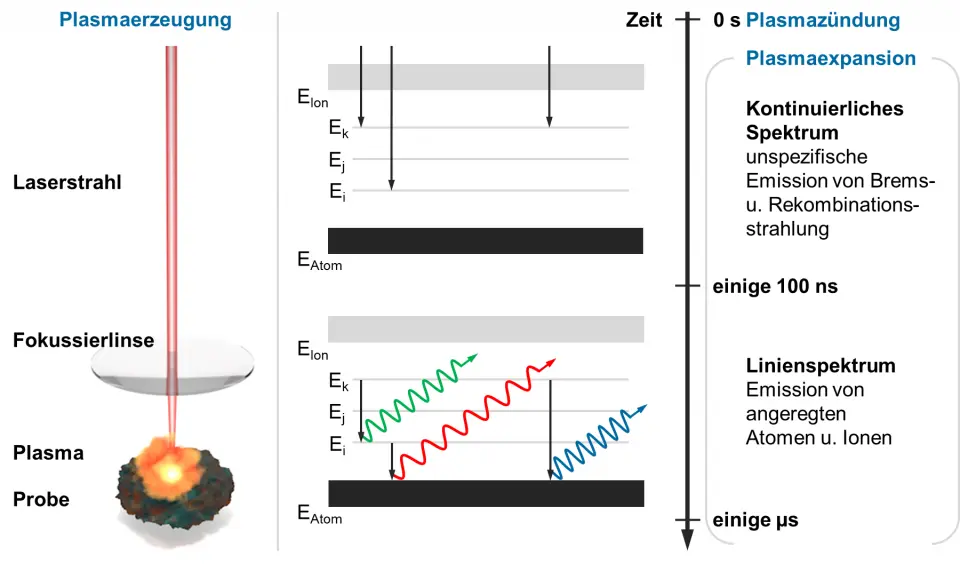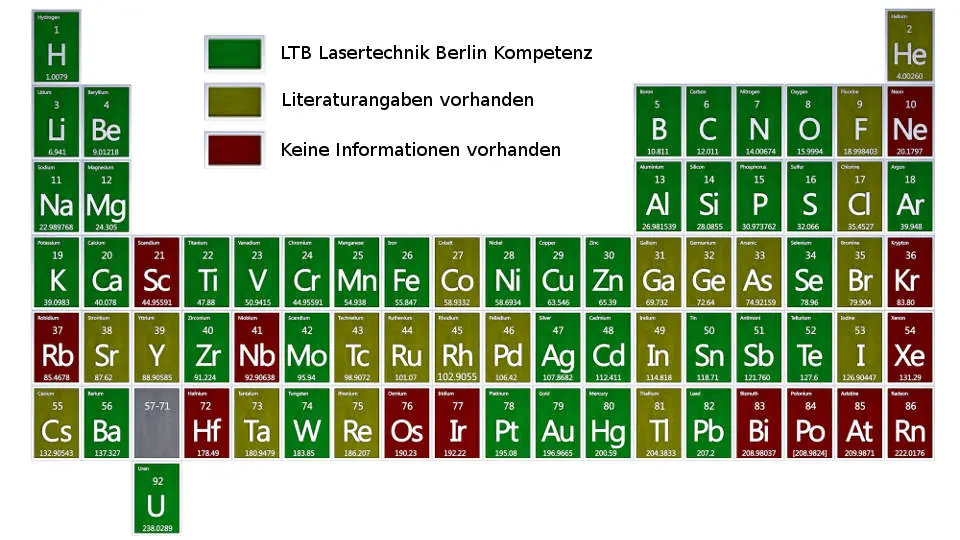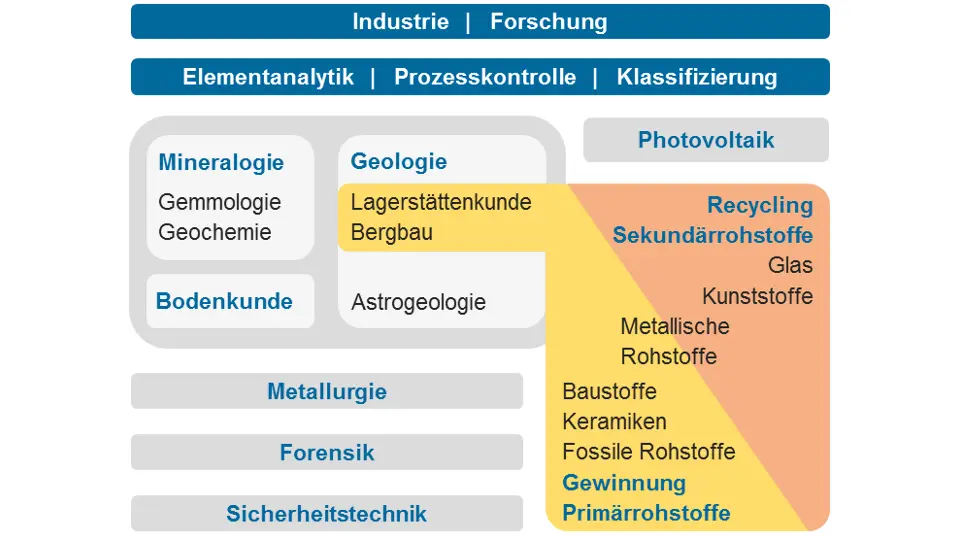
Laser-induced plasma spectroscopy (LIBS)
Laser-induced breakdown spectroscopy (LIBS) is a versatile spectroscopic measurement method for qualitative and quantitative chemical multi-element analysis in real time.
- For solid, liquid, gaseous samples, suspensions
- Non-contact and virtually non-destructive
- No or only minimal sample preparation required
- Spatially and depth-resolved analysis possible
- Distance measurement over several meters
How does LIBS work?
The principle of this atomic emission spectroscopy measurement method is based on the spectral analysis of characteristic atomic and ion emission lines. For this purpose, high-energy, focused short-pulse laser radiation is used to ablate material from the surface of a sample, whereupon a light-emitting plasma of atoms and ions is formed under localized heating of several 10,000 °C. The expanding plasma initially emits non-specific deceleration and decay lines shortly after ignition. Shortly after ignition, the expanding plasma initially emits non-specific bremsstrahlung and recombination radiation (continuous spectrum). After a few 100 ns, the excited atoms and ions recombine, emitting a line spectrum – comparable to a fingerprint. Spectral analysis with a high-resolution spectrometer enables the chemical composition of the sample to be determined.

What can LIBS do?

LIBS is one of the few methods with which it is possible to simultaneously measure a large number of chemical elements to determine the atomic composition of a material sample. In contrast to other methods such as X-ray fluorescence analysis (XRF), this includes in particular the light chemical elements. All qualitative element information is assigned directly to the measured line spectrum with the help of spectral databases. The quantitative analyses are based on calibration measurements of the analyte with different concentrations in reference materials. Depending on the analyte-matrix combination, element concentrations in the lower ppm range can be determined.
LIBS – for which applications?

LIBS has a wide range of possible applications. Basic element analysis in a vacuum, non-contact distance measurements over several meters in hazardous – e.g. radioactive – environments, classification of raw materials in the field of geology and recycling as well as online quality control in industrial production are just a few examples. LTB Lasertechnik Berlin has various LIBS measurement systems in its product portfolio for this purpose.

